Dear readers,
To be consistent with its title, this blog has moved to
http://neurobusiness.wordpress.com/
No new content will be posted on the (this) former url. Please update your bookmarks!
Clement.
Dear readers,
To be consistent with its title, this blog has moved to
http://neurobusiness.wordpress.com/
No new content will be posted on the (this) former url. Please update your bookmarks!
Clement.
Posted in Uncategorized | Leave a Comment »
Once again, what is neuroeconomics? I would argue that 2 coming symposia organized in The Netherlands are about neuroeconomics. At least two prominent figures in neuroeconomics present talks – Allen Sanfey from the University of Arizona, and Scott Huettel from Duke University. The topic of the symposium is about decisions, reward, punishment, fairness, risk taking, … which are the bread and butter of neuroeconomics.
Yet, “neuroeconomics” is nowhere to be seen in the program. So I would argue that this is brand management in action here: depending on the audience, the place, and the strategic goal pursued in a given communication exercise, the displayed identity is molded with care. Now, the question is: what makes the brand “neuroeconomics” suitable in some circumstances, and undesirable in others? What are the reasons that make of neuroeconomics a brand to promote, or to keep invisible?
Program of the 2 symposia in decision-making (aka neuroeconomics):
(20-22 April 2009, Nijmegen, Netherlands)
Posted in neuroeconomics | Tagged Allen Sanfey, brand, brand management, branding, neuroeconomics, Scott Huettel, symposium, The Invisible Man | 2 Comments »
It would seem that the concerns depicted in our previous post are widespread indeed!
The last issue of the Journal of Cognitive Neuroscience, published by the MIT Press, is just out. Martha Farah introduces it with an editorial, basically a two-page warning. Abstract:
Unrealistic, financially motivated claims about functional brain imaging can have a negative impact on society at large and on our field. If too much is promised and not delivered, funders may become wary of cognitive neuroscience and skeptical about its genuine potential. Bad advice given to businesses concerning marketing and personnel selection could lead to expensive mistakes, and bad advice given to governments concerning security screening and interrogation could lead to far worse. Yet imaging is being offered for these applications now, with scant evidence of validity.
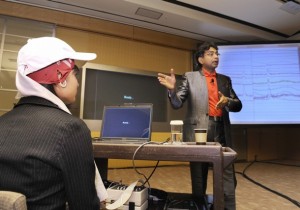
NeuroFocus CEO displays an examinee's brain waves chart as she watches a commercial film wearing a EEG headset. YOSHIKAZU TSUNO/AFP/Getty Images
Pr. Farah, Director of the Center for Cognitive Neuroscience at U Penn, recommends several tactics to the neuroscientists eager to stand up against bad neuroscience, suggesting to “inoculate our students against brain imaging overclaim” or “blogging and posting reactions to blogs“. And I imagine that implicitly, this editorial will also act as a stop-sign to those neuroscientists who entertained the thought of doing profitable consulting jobs for neuromarketing private firms.
I don’t have a clear enough view of the fields of neuroeconomics and neuromarketing to be able to judge if commercial uses of fMRI / EEG have already proved harmful in any manner to scientific research. Has any grant application been rejected with referee reports mentionning the wrong commercial uses of brain scans? Is there any informal, unexpressed mood in scientific circles that “cognitive neuroscience” is somewhat dodgy, because of the bad press it is given?
What are your experiences in your universities, in your research labs? (you can post your reactions to this post, as recommended by Martha Farah, or contact me privately to help me in my research!)
Posted in cognitive neuroscience, neuromarketing | Tagged cognitive neuroscience, EEG, ethics, fMRI, hype, Journal of Cognitive Neuroscience, Martha Farah, neuromarketing | Leave a Comment »
Two days ago, I attended a conference by brand-guru Martin Lindstrom where he developed the themes of his last book, Buy-ology. The audience was principally made of business executives and marketing agencies, but you could also find a few academics (from RSM, and I’ve also seen some from Tillburg), plus a couple of journalists.
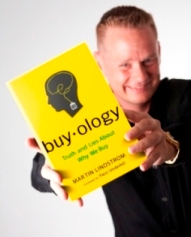
Buy-ology, published in Sept 2008
The guy Lindstrom is clearly talented. For a day-long he talked about branding with about two bright ideas per minute, illustrating them with TV ads or Youtube clips. The topic of the day was how fMRI (brain scans) and EEG (measurement of the electrical field at the surface of the scalp) can reveal hidden truths about consumer attitudes towards the brand.
Tricky business, since right from the start Lindstrom cautions the audience that he is not a scientist. At the same time, he also boasts his collaborations with professors and doctors, and his discussions with this guy from Oxford, etc. And obviously, there are plenty of brain images on his slides. Interestingly, the pictures reflected the ambiguous scientific legitimacy of the talk: they varied from actual scans, to the most freely interpreted pictures of what a brain would look like.
At the end, with a panel discussion, a discussion engaged with Ale Smidts (who directs the Erasmus Centre for Neuroeconomics, which I am a member of).

Ale Smidts
Smidts criticized the shaky scientific foundations of the results, questioned the usefulness of fMRI when traditional behavioral experiments would have been enough, and last, suggested that the book was dangerous for future scientific research – because it would associate the field with spurious claims, making neuromarketing look bad and suspicious to the public opinion.
What are we to do with that? Is Lindstrom to be morally condemned for his pseudo-scientism, or is Smidts idealistic when he posits that a profit-driven industry should comply to academic standards?
I have no definitive answer, but some tentative ideas. It seems to me that neuromarketing is a two-way road, with a traffic of several types of scientific and non-scientific actors.
In one direction, you have specialists of the physiology of neurons, who look in the direction of cognitive neuropsychologists, and are suspicious of the inflated claims that these guys make. For example, neuropsychologists discuss the role of “the amygdala” in psychological processes, when the physiologist knows that the amygdala is a gathering of sub-nodes, each with complex and differentiated cell structures. How scientific is it to discuss “the amygdala”, questions the physiologist?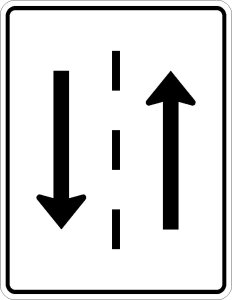
Still down in the same direction, in turn, cognitive neuro-psychologists are sometimes suspicious of the claims made by neuroeconomists. Take the amygdala for example. Cognitive neuropsychologists know that amygdala is related to fear reactions, but also that it is much more complicated than that: it could be also that the amygdala activates when the individual is faced with novel situations, or confronted with a particularly salient information. So neuroeconomists are a bit too quick to simplify when they summarize rapidly in amygdala = fear in their articles, or so think the neuropsychologists.
Keeping driving in the same way, neuroeconomists are suspicious of neuromarketers in the business industry, who tend to pay too much attention to the wonders of the technique (“a 7 million dollars study, with fMRI and all”), the power of the images, and tend to inflate scientific claims in order to sell them more easily. Take the amygdala, and its role in fear. Yes amygdala is involved in fear reactions, knows the neuroeconomist. But is it valid to say, as Lindstrom says, that as we are hard-wired for fear, it can be used to induce a reaction in the consumer and trigger a buying decision? Where is the evidence? (Lindstrom’s example was Colgate advertising on health issues – buy Colgate or else you’ll risk terrible gum diseases and much worse).
And as I said, this road has a two-way traffic, so that the inverse chain of attitudes co-exists: Neuromarketers in the industry think that neuroeconomists are annoying scientists clinging to unnecessarily strict standards, neuroeconomists think that cognitive psychologists neglect important social phenomena, and cognitive neuropsychologists see neurophysiologists as producing precise knowledge but of an exceedingly narrow scope.
At each level of the creation of knowledge, the actors stick to their standards of what constitutes a legitimate claim. They are respectful of their neighbors situated higher in the natural science pecking order. Indeed, they rely strongly on them to build their own legitimacy. But they also question the applied relevance of this form of more fundamental knowledge.
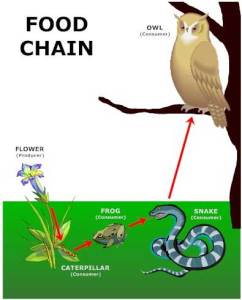 Conversely, each level looks a bit down at their next neighbor, a level down in the traditional order of scientific knowledge. Yes this neighbor is closer to the practical interests of the broader society, but is it not achieved at the price of unwarranted simplification and generalization?
Conversely, each level looks a bit down at their next neighbor, a level down in the traditional order of scientific knowledge. Yes this neighbor is closer to the practical interests of the broader society, but is it not achieved at the price of unwarranted simplification and generalization?
In the case of neuromarketing, I would argue that the field is made of all the links of this food-chain. Neuromarketing is made of those interrelated and yet sometimes incompatible knoweldge claims. Every field is animated by these tensions between theoretical and applied forms of knowledge (just think about financial economics – this field must have experienced strong internal tensions those last few months, or so I hope).
The question is, for neuromarketing, whether those tensions will stabilize or stretch to the point of rupture – which was Smidts’s point. 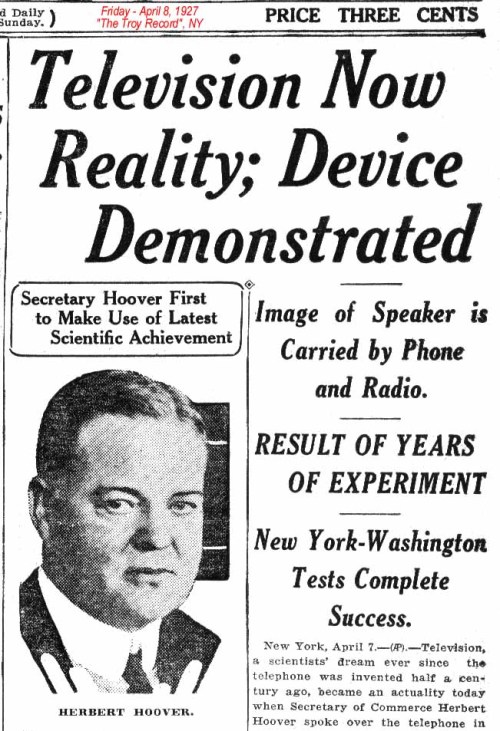 There is a real possibility that the (spurious, unethical, or else) claims and activities of the industry of neuromarketing would backfire and deconsider scientific research in the field. It almost happened a few years ago, and might happen again.
There is a real possibility that the (spurious, unethical, or else) claims and activities of the industry of neuromarketing would backfire and deconsider scientific research in the field. It almost happened a few years ago, and might happen again.
A safe bet is that this is yet another animal which will have the decisive role in the destiny of this food-chain: the media. How will they report on neuromarketing? On which tone? Check your newspapers!
Posted in neuromarketing | Tagged Ale Smidts, chain food, Martin Lindstrom, Media, neuromarketing | 2 Comments »

The institutionalization of neuromarketing
To my knowledge, history and sociology of science concentrate their efforts much on ideas (intellectual histories) and technologies (technology studies, or STS). Coming from economics, I developed the feeling that this distinction leads to neglect the applied side of science: neither purely ethereal as ideas can be, nor completely embodied in objects, with contours and patented identities, as technologies can be.
Applied economics, like finance, health economics, agricultural economics, etc., surely deserve a special reflection on their organizational dimension, and the special places where they are developed. Beyond the dichotomy of ideas and tools, theoretical and technological, the stuff of applied science is the organizational, and the intercultural. Where is it practiced? Under which contractual arrangements? For which output, measured against which standards? Sales, publications, royalties, size of an organization, a successful career of entrepreneur? Peer-review process or hierarchical coordination? Impact factor, profit target, or audience ratings?
To give an example. Yesterday, the university of Reading posted a job announcement to hire a “Neuro Marketing Researcher“.

Bunnyfoot specializes in eyetracking
The deal is a two-years project to work not in the university, but in a private firm specializing in eye-tracking, Bunnyfoot Ltd. The firm cooperates with the university of Reading under a Knowledge Transfer Partnership, for example in this recruitment process.
To me, this is a nice illustration of how neuromarketing develops in practice, and that it must be understood by observing its development at the interface between several cultures. It can’t be classified, or studied, as merely an academic venture OR a business opportunity. Just like finance, neuroeconomics, economics of development, and any economics-of-applied-stuff, neuromarketing does not develop only in the ivory tower of academia, but also in consumer groups, small consulting firms, hospitals, courts, cabinets, NGOs, funding agencies, professional and popular media, and the interstices between all of these. What an exciting program for research!
Posted in neuromarketing | Tagged applied science, Bunnyfoot, eyetracking, job posting, neuromarketing, University of Reading | Leave a Comment »
At the opening symposium of the Donders Institute (Netherlands) last November, Victor Lamme showed a video that fully grasped the attention of the packed audience. It was a filmed experiment in psychology where people were being fooled by simple, even obvious tricks.
It introduced his discussion on the nature of consciousness and awareness, with difficult questions such as: can we say of someone who is not aware of what s/he perceives that s/he is still conscious? Or as Victor Lamme says it elsewhere: ‘In my research I want to separate becoming conscious of the outside world from the reporting on it’.
The talk was good, with Lamme suggesting a definition of consciousness that included functional and structural criteria of neural activity. However, at the very end a question from the floor completely destroyed his argument, when someone pointed that, according to the criteria developed in Lamme’s definition, neural activity during sleep would in fact also qualify for his proposed definition of consciousness – quite a problem !!
Anyway, I have found a similar video demonstrating how easy it is to trick conscious and fully aware people. It is less academic than the one presented by Lamme but it has the benefit of working on you, the viewer. So, will you be tricked? (please answer the anonymous poll thereafter).
Posted in cognitive neuroscience, psychology | Tagged cognitive, cognitive neuroscience, consciousness, Donders Institute, experiments, psychology, Quirkology, Richard Wiseman, tricks, Victor Lamme, video | 1 Comment »
Here is a video interview of Peter Bossaerts, one of the foremost neuroeconomist around. He specializes in neurofinance, and in this interview he explains the basics of it to Arvetica, a Swiss consulting firm. Bossaerts is indeed based at the Swiss Finance Institute and Ecole Polytechnique Federale de Lausanne, in addition to CalTech.
Posted in neurofinance | Tagged Arvetica, neurofinance, Peter Bossaerts, Swiss Finance Institute, video | Leave a Comment »